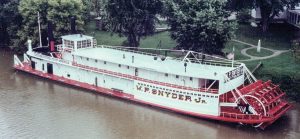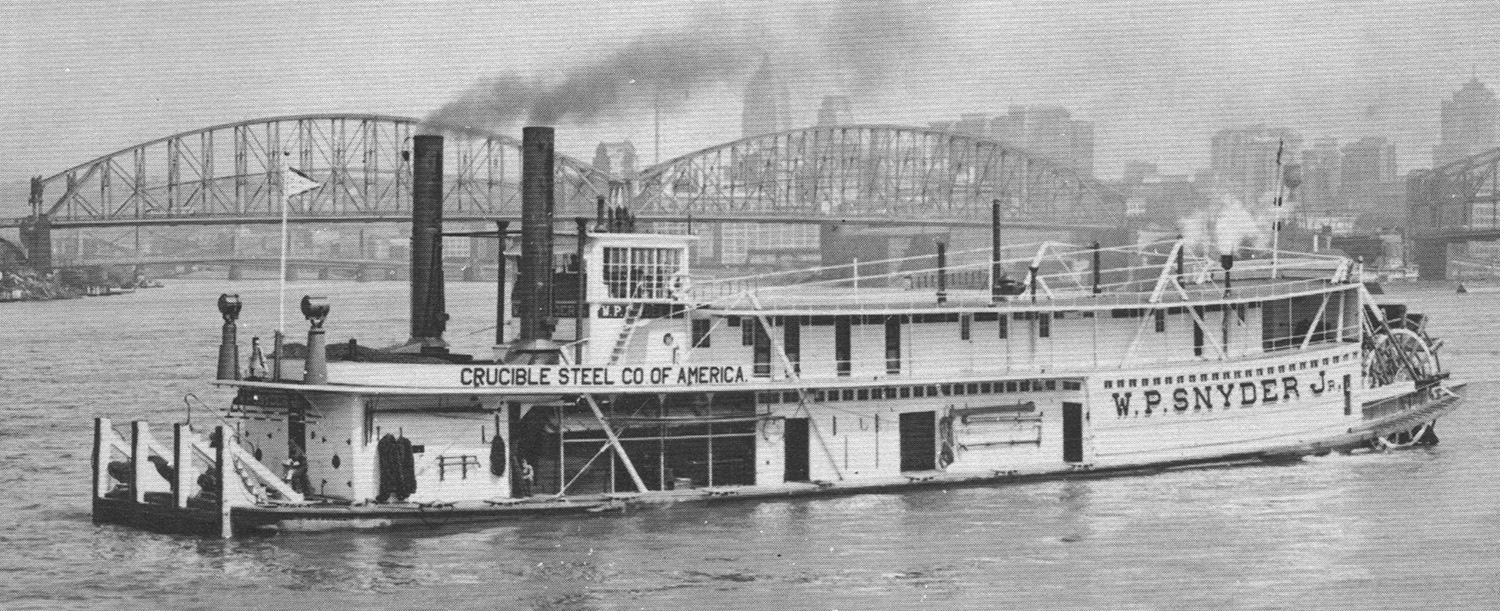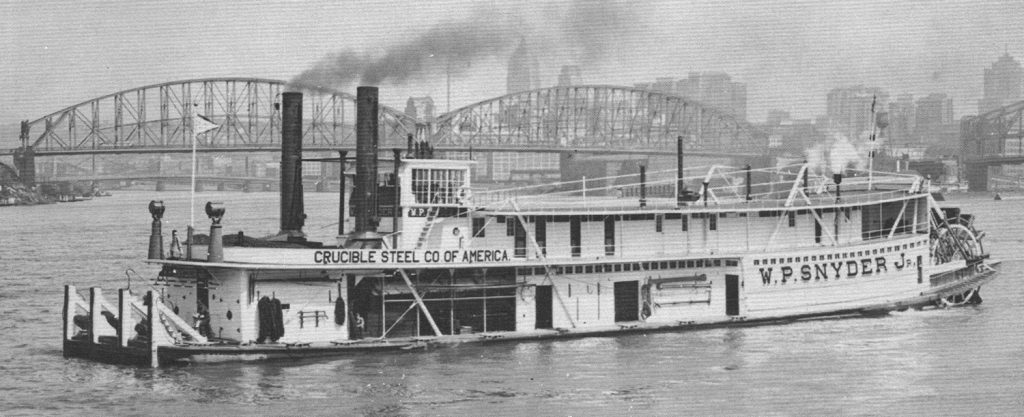The W.P. Snyder Jr. in the Pittsburgh harbor. (Keith Norrington collection)
Happy New Year! One of the major milestones of river history for 2018 will be the 100th birthday observance of the steam towboat W.P. Snyder Jr.
Since 1955, the retired riverboat has served as a floating museum at Marietta, Ohio. In recent years, an extensive restoration program has been underway to ensure that the historic vessel remains extant for generations yet unborn.
The Snyder was built in 1918 as the W.H. Clingerman by the Pittsburgh firm of James Rees & Sons—the same company that constructed the steamboat Idlewild in 1914, which survives today as the Belle of Louisville. The original steel hull of the Clingerman measured 151.1 feet in length by 28.4 feet in width, with a depth of 5.2 feet. The hull was later widened to 32.5 feet. Four boilers supplied steam to compound engines, also built by Rees, which were rated at 750 hp. and had cylinders of 14 and 28 inches with a 7-foot stroke. The sternwheel is 21 feet in diameter with bucket planks having a 36-inch dip.
Owned by the Carnegie Steel Company, the vessel was named for the president of the H.C. Frick Coke Company. A sister towboat, the Homestead, was built by Rees at the same time.
The steamboat made its maiden trip from Ambridge, Pa., under the command of Capt. A.O. Ackard, who was master for the first year of operation. Subsequent masters included Capt. Cal Blazier, Capt. W.J. Cook and Capt. Clayton Adams. Other officers were Capt. George Long, pilot, and William Herd, chief engineer. Used primarily to tow coal from the mines along the upper Monongahela River to the Carnegie works at Clairton, Pa., the boat also handled tows of steel and is known to have made one trip as far south as Memphis.
In the spring of 1938, Carnegie renamed the boat J.L. Perry. For a brief period in 1945, the name was change to A-1. The Crucible Steel Company of America purchased the boat in the fall of that year and changed the name to W.P. Snyder Jr.
The whistle originated on the Charley Jutte, a wooden-hulled towboat built in 1904 by the Howard yards at Jeffersonville, Ind. The Jutte later changed ownership and was renamed Crucible, retaining the whistle until the vessel was retired and the whistle transferred to the Snyder. From 1945 until late 1953, the riverboat continued to tow coal for the Crucible plant at Midland, Pa. On September 23, 1953, the towboat was retired and laid up at Crucible, Pa.

During the summer of 1955, Crucible Fuel Company agreed to donate the Snyder to the Ohio Historical Society to augment the River Museum (then housed in the lower level of the Campus Martius Museum) at Marietta, Ohio. The towboat was delivered under its own steam from Brownsville, Pa., to Marietta. Pushing a quarterboat that housed some 100 invited guests, the Snyder was the last steamboat through Muskingum River Lock No. 1 (removed in 1968) on the afternoon of September 16, 1955. The master for the final and festive five-day journey was Capt. Frederick Way Jr. (1901-1992), the beloved president (for five decades) of the Sons and Daughters of Pioneer Rivermen.





